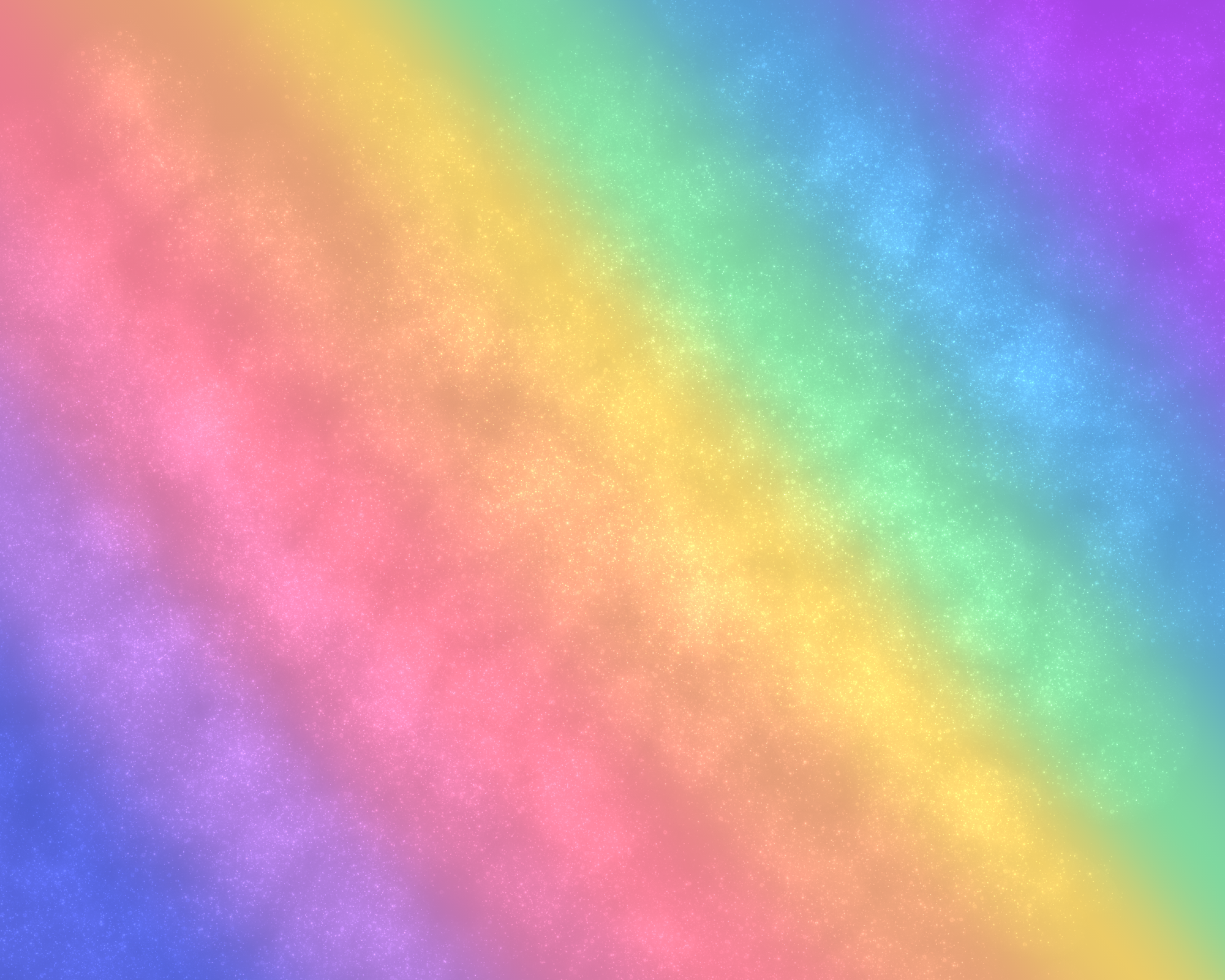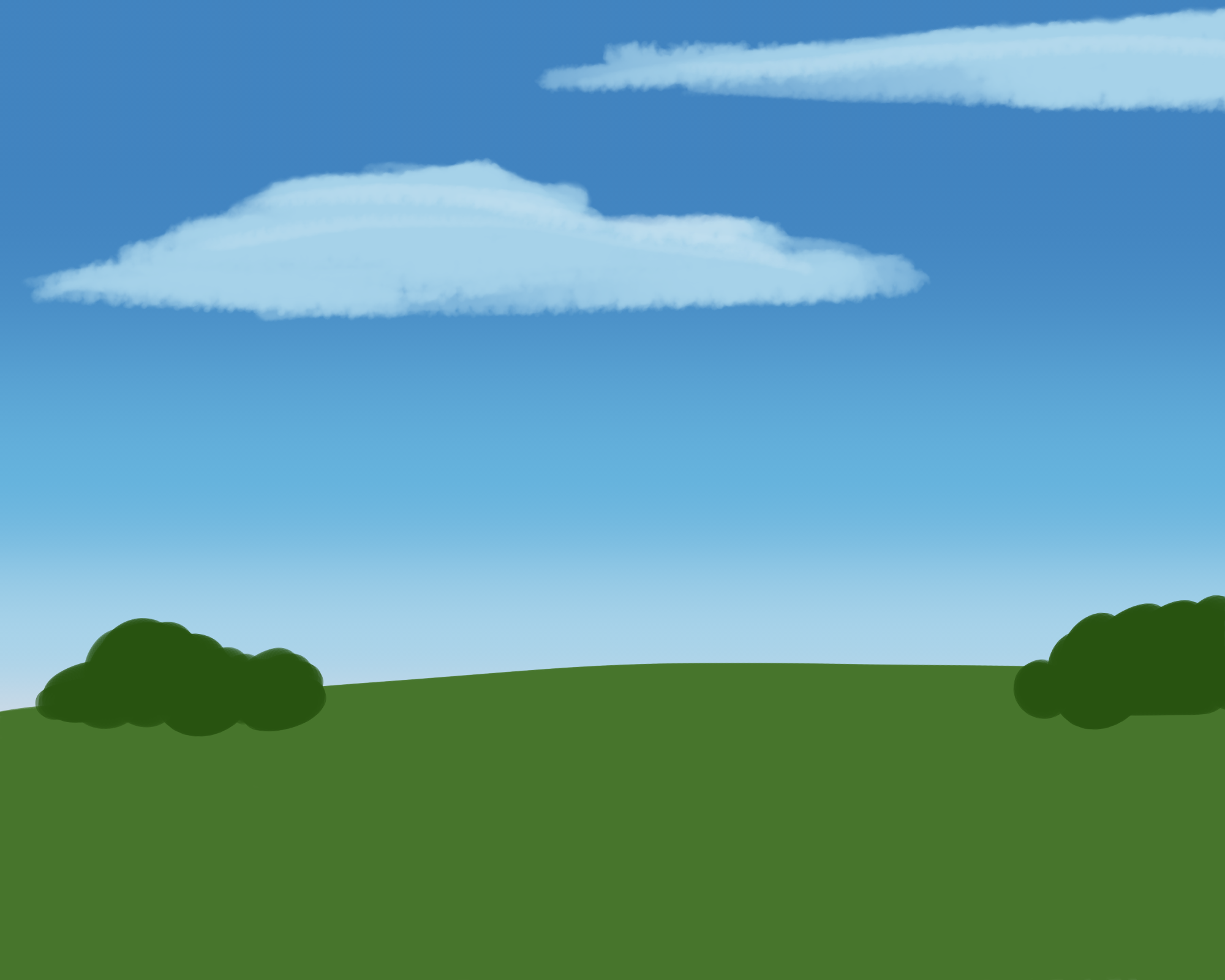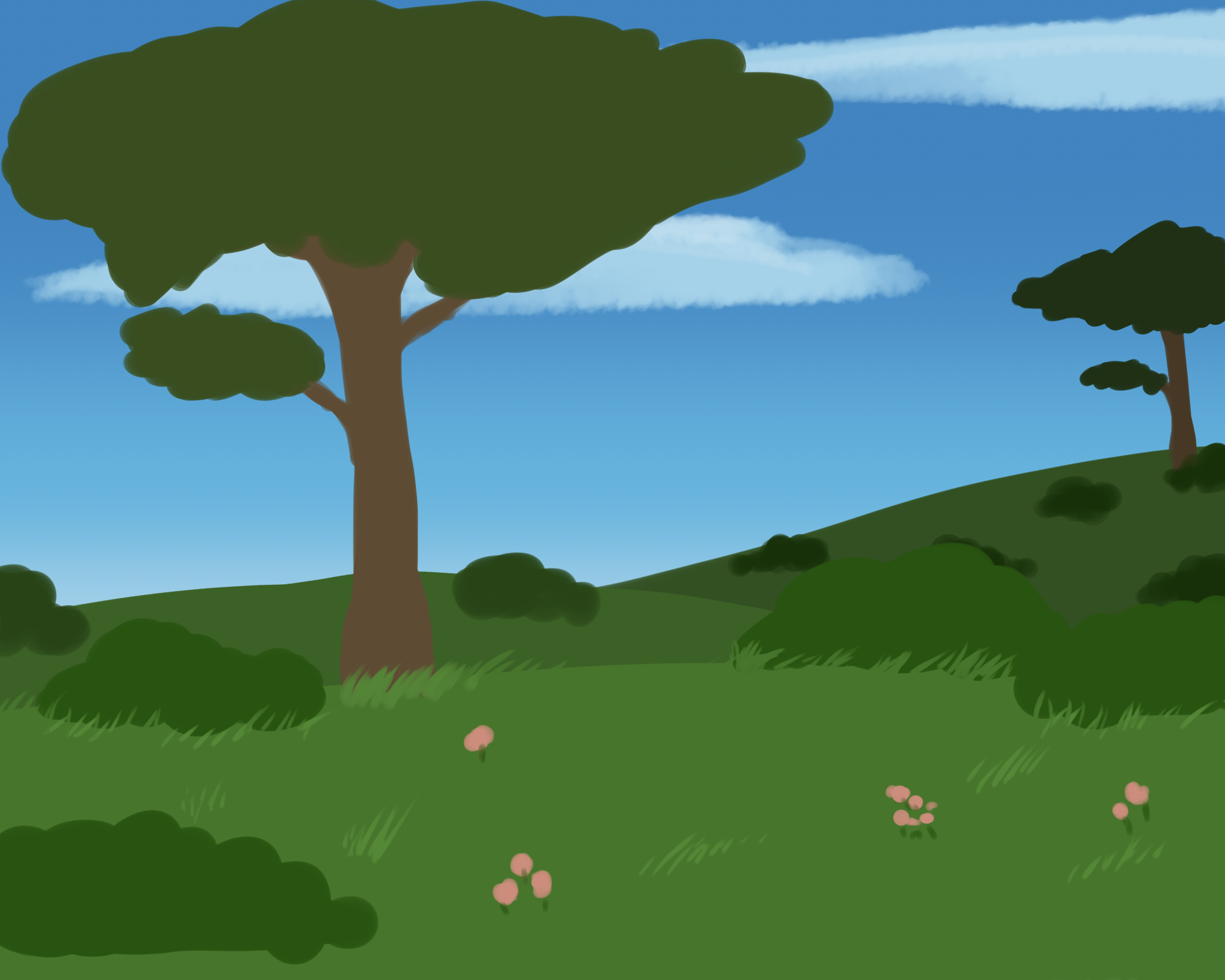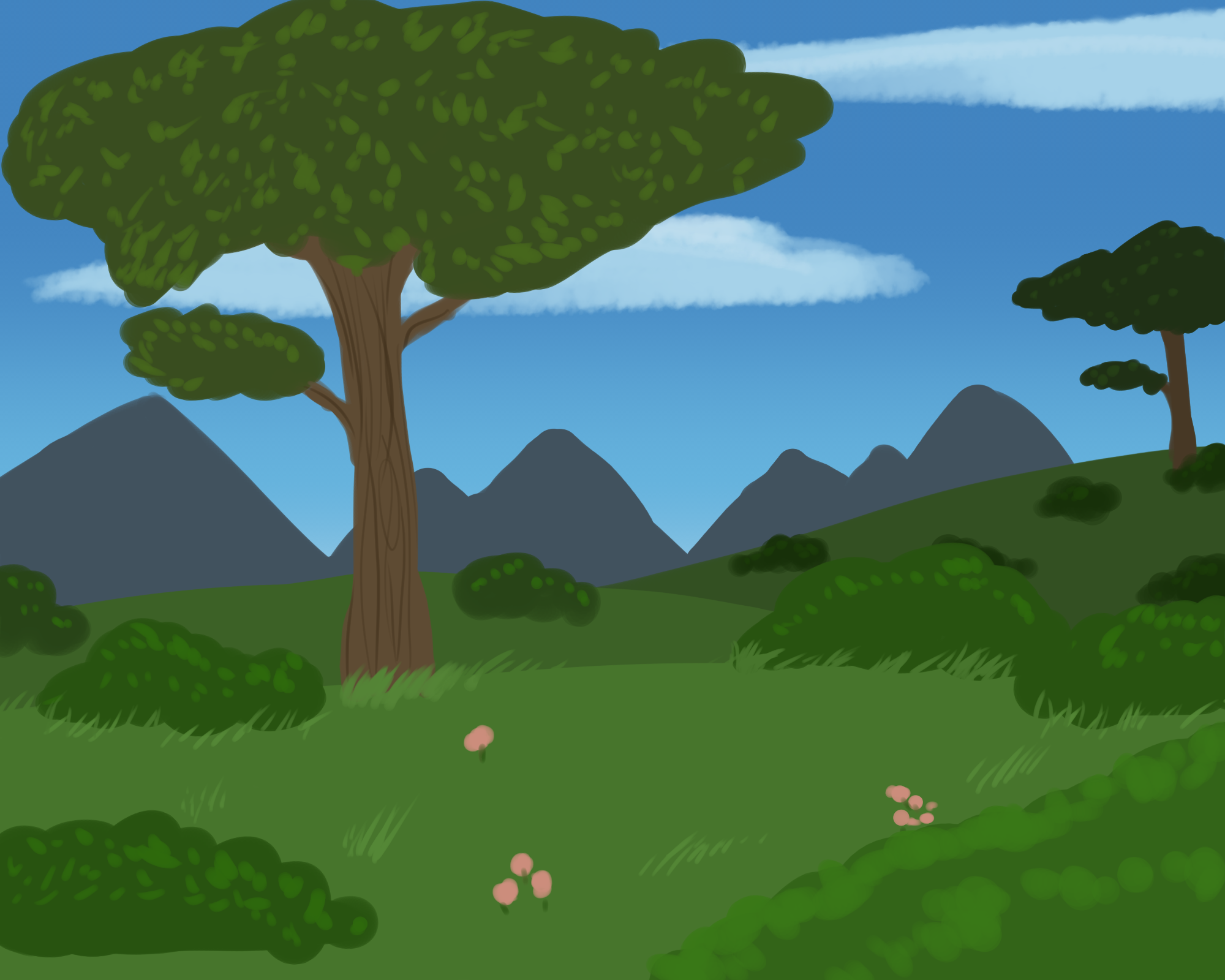In order to pass for certain types of backgrounds in art, it will help to understand what an admin means when they say "simple" vs "intermediate" vs "complex" and so on. This guide is here to explain and illustrate the differences in the meanings.
Do keep in mind we don't judge backgrounds based on their complexity! The more individual elements you add to an image will not up the complexity, it depends on the layers and distance shown! Additionally, we don't judge based on whether the background is shaded or not. However the more elements and effort put in, as well as the more detail and refinement done as compared to your usual work, will possibly qualify for the polished bonus, which increases PT payout.
Abstract
First up, we have Abstract Backgrounds. Abstract backgrounds are usually splashes of color with little cohesion, other than maybe with consideration to color theory, and define next to no shapes or environment. It can't just be a single color or two and must have some kind of design or pattern to it. It must be obvious some effort was put into it and not just a 2 second paint dump.

Props
Secondly, we have Props and Elements. These kind of backgrounds are not really backgrounds at all. Usually left blank, they consist of generally no more than a small handful of items, objects, or props simply to give context as to the subject of the art. These can be items such as a single tree, a giant rock, a barrel or two, or even a few small critters. Outside of these small inclusions, there is nothing else to give context to the actual location. Generally there must be at least two elements, and no more than 5, but depending on the elements chosen and the way they're presented more or less could be allowed.
Simple
Next, we have Simple Backgrounds. Simple backgrounds consist of usually only enough information to describe the immediate location, and lack a further background or nearer foreground. Below is the simplest example, while following is a more detailed background, but we still consider it to be simple as it mainly only contains what is considered a "middle ground."


The required elements for a simple background is the sky and footing at minimum. Footing, in the case of images in the sky or underwater, can be a cloud, rock, coral, or something simple that isn't necessarily 'ground' to stand on. Prop elements are considered detail and are not taken into consideration for the complexity. Sky elements consist of clouds, stars, auroras, sun, moon, any other phenomena that might be up there, while ground elements (depending on location) consist of dirt, blades of grass, flowers, trees and bushes, rocks, pools of water or other liquids, and may include waves along the shore depending on perspective.
The key to remember for all backgrounds is that we go by a layer grouping as opposed to individual 'clutter' elements. While the second image above does have a second hill, it is unclear if that is a close up hill (Which would be considered a "mid ground" layer) or a distant hill (Which would be considered a background layer). Adding elements like houses or trees would help admins to know whether an element like that is intended to be close up or far away and is the difference between simple and intermediate.
Intermediate
Next, we have Intermediate Backgrounds. Intermediate contains more individual elements, in addition to more distant backdrop that's clearly farther away than the "middle ground" of the simple backgrounds. However, note that it still lacks a very close foreground or farther in the distance background. The second Intermediate example contains more detail, but is still considered like the first.


The required elements for an image to count as intermediate is for there to be a sky, a mid ground, and a background. Secondarily, you can choose to have closer foreground elements instead of the background if the image has many elements that hide the background. We also count an image as intermediate if we as admins can't in good faith count it as Simple or Complex.
Unlike with simple backgrounds, Prop elements are somewhat taken into slight consideration for the image to count as intermediate. While we don't count each different kind of element, we do count each individual one. Certain features, like the sun and moon or the stars, aren't generally counted as that is simply a part of the sky, like how blades of grass or bushes aren't counted as they are part of the ground. However, things like auroras, selectively placed flowers, the odd log or rock feature, are counted towards it counting as an intermediate background.
Unlike with the simple examples, it's clear in the intermediate examples above that there is more distance between the mid ground the character would be on and the background that shows more distance. While complex elements and detail is still not required, you still have to include some elements to show distance. Additionally, simply adding the shadow or shape of distant mountains instead of the background would not make it count as intermediate, unless the mountains have depth and detail to them (Such as atmospheric scattering). The goal here is layering and depth. The backdrop may include 1-2 layers of distant hills or even trees, may include certain structures. If underwater, may include a variety of large rocks and coral or even a shipwreck. If in the air, treetops or the ground below would work.
Complex
Finally, we have Complex Backgrounds. Complex backgrounds include much of the above, and add even further backdrop, and a very near forground; or foreground element.
We're more loose with the guides when it comes to underwater or high sky scenes that are meant to be complex, since we understand that getting the depth and level of detail isn't always possible. For underwater, you could consider adding things like fish or other aquatic creatures both near and far, or other things such as kelp, coral, rocks, cave openings and so on. For the skies, consider adding more distant clouds, birds, and similar. If showing any part of the ground, you might consider forests or extremely distant mountains.


Complex backgrounds usually require a variety of elements to help show depth. This might include something like a small critter or flower for the foreground to show how close it is, while the mountains or trees in the distance could have some atmospheric scattering (Or in simpler terms, a blueish tint that gets more intense the further something is.) Mountains will generally have some detail to them, such as snow on top, or greenery leading up them.
Like with intermediate backgrounds, Complex backgrounds should have a background and middle ground. The far backdrop must be obviously more distant, with 1-2 layers of further scenery. This includes things like towns, mountains, hills, forests, and similar large elements. If underwater, may include things like distant whale silhouettes, coral reefs, rocks, etc. The foreground - which is not on the same level/layer as the middle "ground" layer, must be much closer to the viewer, and might obscure some of the rest of the scene due to being nearer to the "camera". It can be nearly anything but may most often be foliage, or certain structures or rocks, or even a critter.
3D Images
Lastly, we have 3D Backgrounds, which includes not only 3D program art, but also personal photographs of scenery. Unfortunately, the creators of this tutorial are inept with 3D modeling programs, and are unable to provide personal examples. However, the above guidelines still apply. We unfortunately cannot go into much depth about 3d programs at this time.
However, photos taken in real life also count as 3d images. Examples like this photo, taken by this guide's author, would count as a simple background and is allowed:

Creating a 3D landscape doesn't mean you have to model each material or object used, but you do need to manually place down a ground, adjust it, and manually place and arrange all objects within the scene. Using something like generative 3D programs, for example, sadly do not count as 3D, since they generate scenery for you with simple mouse drags.
Please remember, as well, that reusing 3D backgrounds is allowed, but you'll need to turn the camera angle a noticeable amount so as not to recycle already-used perspectives.
As for photos, the photo cannot be taken from stock. It must be something you or the one creating the image has taken or otherwise has the rights to use. You cannot reuse photos, and the character must be interacting with the background (Ie cannot look out of place).